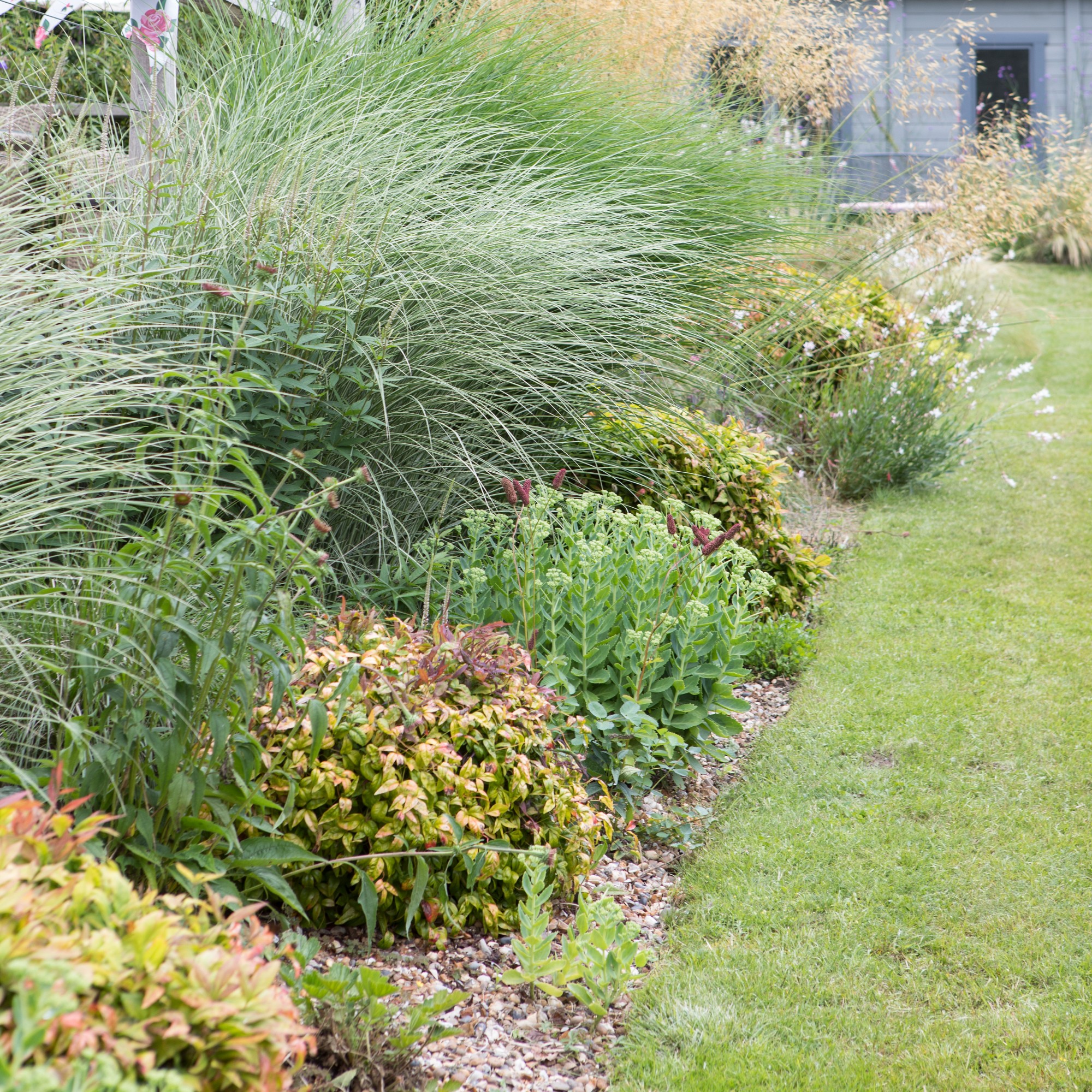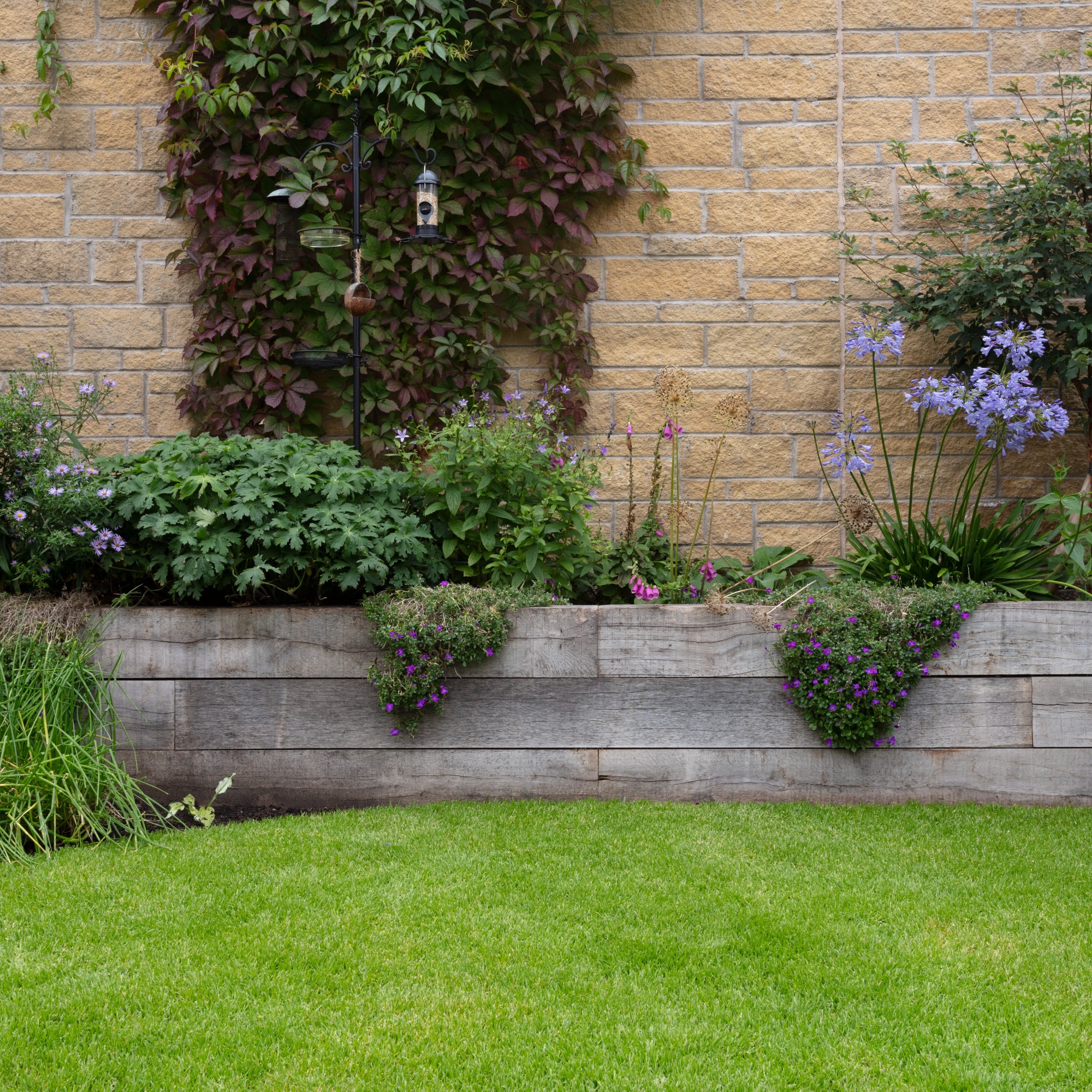
If your grass is looking a little worn and needs rejuvenating, learning how to scarify a lawn is a smart move.
Once you've figured out when to scarify a lawn, you can get to work on your grass. But first, you'll need to know what scarifying actually means.
'This process involves removing thatch, a layer of dead and decaying grass that can prevent nutrients, water, and air from reaching your lawn's roots,' explains Julian Palphramand, head of plants at British Garden Centres.
Lawn scarification could be the key to healthier grass, and it's no wonder it's such a popular lawn care tip. We've put together an easy guide on how to scarify a lawn to help you nail the technique.
How to scarify a lawn

Scarifying is one of the best autumn lawn care tips out there, and it involves removing dead thatch – the brown material underneath your lawn’s grass blades – from your lawn. Apart from the fact that in large amounts, dead thatch doesn’t look particularly pleasing to the eye, it can also prevent necessary nutrients and water from getting to the grassroots.
Scarifying can also get rid of moss in a lawn and promote the growth of strong, healthy and greener grass.
What you’ll need
You'll need the right tools if you want to learn how to scarify a lawn, and there are a few options to choose from depending on preference and the size of your lawn.
If you're looking for a tool that won't break the bank, and you're willing to put in a little elbow grease, try this highly rated Magnusson Scarifier from B&Q.
The wheels on this lawn scarifier make the manual process easier, with a handle that can extend up to 1.5 metres long.
If you want to invest in a 3-in-1 tool that rakes, scarifies and aerates, this Vonhaus Electric Lawn Scarifier & Rake is Amazon's Choice.
Step-by-step guide
1. Lawn prep
Before you start scarifying, you'll need to prepare your lawn for the rather stressful process it’s about to be put through.
It's important to cut your grass first, to expose the layer of thatch beneath. 'Never remove more than one-third of your grass height, but your lawn should remain short before scarification,' says Chris Cooper, senior product marketing manager at Hayter, the specialists in battery lawnmowers.
You should also clear any sticks, stones, stubborn weeds and other debris like fallen leaves away from your lawn.
Ionel Giuran, Fantastic Gardeners' lawn care expert, adds, ‘If the soil is dry, water the lawn a day or two before scarifying because damp soil will allow for easier penetration of the scarifier.'
Just make sure the soil isn't soaking wet – your lawn should be moist for the best results.

From there, the process slightly differs depending on what tool you choose – a handheld scarifying rake, or a powered machine.
'Whichever you choose, you should stick to one tool in order to achieve evenness and the best final result,’ advises Steve Chilton, garden expert from LeisureBench.
2. Using a handheld tool
If you have a smaller lawn or less thatch beneath the grass, you could use a handheld rake or scarifying rake. Just bear in mind that this can be a tiring task.
To start with, tear up the thatch by combing through the grass with your rake, covering every area of your lawn. Try to move as quickly as you can, and keep even coverage across the lawn.
‘Use another rake to collect any debris, then go deeper into the lawn, at a 45-degree angle,’ says Steve.
You should start to see the dead thatch building up around the rake as you move across your lawn. But bear in mind that you don't need to remove all of the thatch. It's perfectly fine, and actually healthier, to leave a little behind.

3. Using an electric scarifier
Alternatively, a number of electric scarifiers are available to buy which can save time and energy.
‘Set the blades on the scarifier to the appropriate depth, which will depend on the severity of thatch buildup,' says Ionel from Fantastic Gardeners. 'It's generally recommended to start with a shallower setting and adjust afterwards if needed.
'Run the scarifier over the lawn in parallel passes, covering the entire area. The machine will cut through the thatch, pulling up any debris to the surface.’
Finally, collect the debris by either raking it in or using the scarifier’s collection system, if it has one. This is a crucial step, as leaving the debris behind can smother the grass.

4. After care
After putting the grass through all that stress, it’s a good idea to feed it so it recovers quicker.
‘It is usually advised to fertilise the lawn following scarification,’ says Kevin Gess, owner of Prestige Lawns. ‘Scarification of the grass can cause stress, and feeding it with nutrients afterwards aids in its recuperation. Fertiliser also enables the grass to absorb nutrients more effectively and promotes its renewal.’
If you learned how to aerate a lawn this year, those skills will also come in handy after scarifying a lawn.
'Always aerate the soil afterwards,' says Chris from Hayter. 'Essentially, aerating lets water and oxygen flow deep into the soil. This means the soil gets more of what it needs to stay healthy, keeping your lawn strong during the harsh winter weather.'

FAQs
Should you seed before or after scarifying?
If you've been thinking about overseeding your lawn, you might be wondering where this task fits in with the scarification process.
'You should definitely seed after scarifying,' says Chris. 'When scarifying and aerating your soil, you will be disrupting the ground significantly – especially with the removal of moss and thatch. This means if you spread the seed before, you’ll risk displacing seeds all over the place!
'Overseed your lawn after the scarifying process to help it grow stronger than ever, paying special attention to any thin areas that may have been most affected by thatch and moss.'
Do you cut grass then scarify?
As previously mentioned, it's essential that you cut your grass before scarifying to expose the dead grass and thatch beneath.
‘Before scarifying, mow the lawn to a shorter height than usual to help the scarifier reach the thatch layer more effectively,’ Ionel advises.
If your lawn needs a little TLC, learning how to scarify a lawn could be the key to its revival, so follow the above tips and get scarifying!







